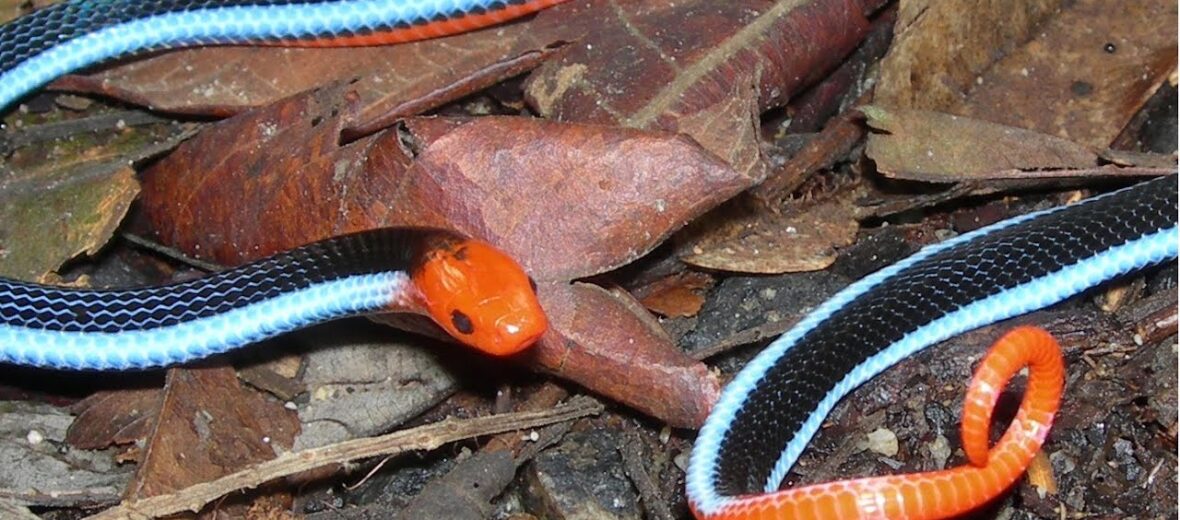
Not all venomous snakes are created equally. Take the blue Malayan coral snake, for instance. These snakes are as deadly as they are beautiful. They live in the primary and secondary forests, in lowland and lower montane regions in southeast Asia. This snake is also called the blue coral snake. Blue coral snakes typically flee when approached, but have been known to hold their ground, with their tail in the air as a warning. They are listed as Least Concern by the IUCN.
First the Stats…
Scientific name: Calliophis bivirgatus
Length: Up to 5.9 feet
Lifespan: Up to 15+ years
Now on to the Facts!
1.) These snakes are nocturnal (active at night).
2.) There are 3 known subspecies of blue coral snakes: b. bivirgatus, b. flaviceps, and b. tetrataenia.
3.) They prey, in part, on other venomous snakes. They also consume other reptiles, amphibians, and birds.
4.) No antidote exists yet for this snake’s venom.
5.) Nearly 80% of their habitat has been destroyed by human development.
But wait, there’s more on the blue Malayan coral snake!
6.) Females produce between 1 – 3 eggs each season.
7.) The venom glands of these beauties extends to nearly 1/4 the length of their body!
Did you know…?
The venom of a blue coral snake can cause all of the victim’s nerves to fire at the same time, instantly triggering full body spasms, paralysis, and a quick, terrifying death!
8.) The spasms you can feel in your muscles, after being envenomed, would feel like severe muscle cramps. However, they would be all over your body and would be so powerful you couldn’t move. Good times!
Now a Short Blue Malayan Coral Snake Video!
Also, check out the Critter Science YouTube channel. Videos added frequently!
Want to suggest a critter for me to write about? Let me know here.



